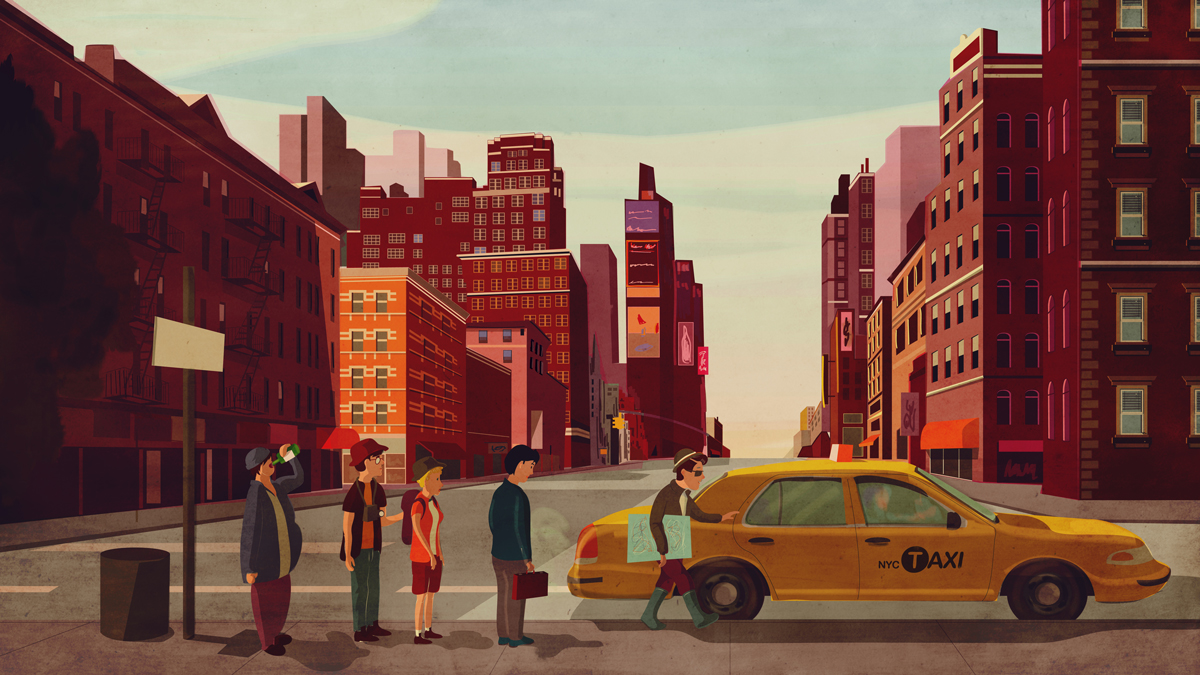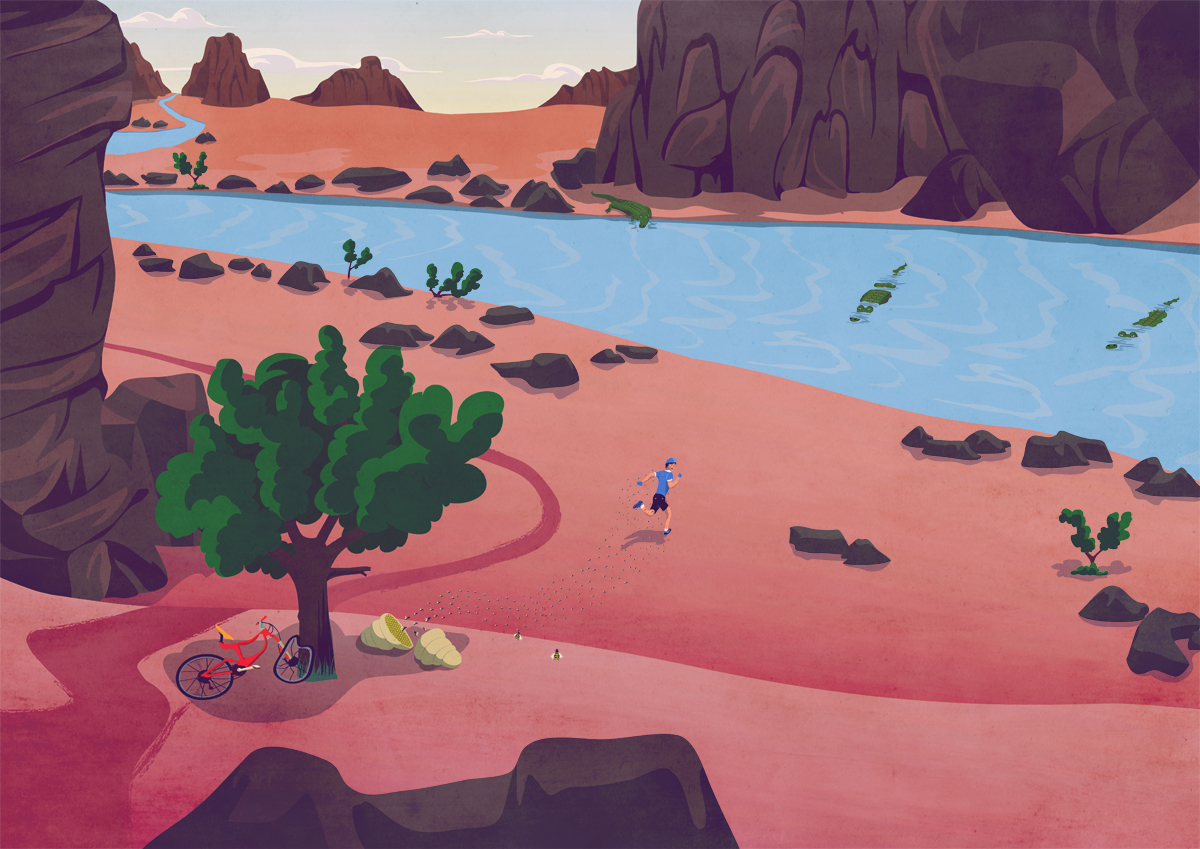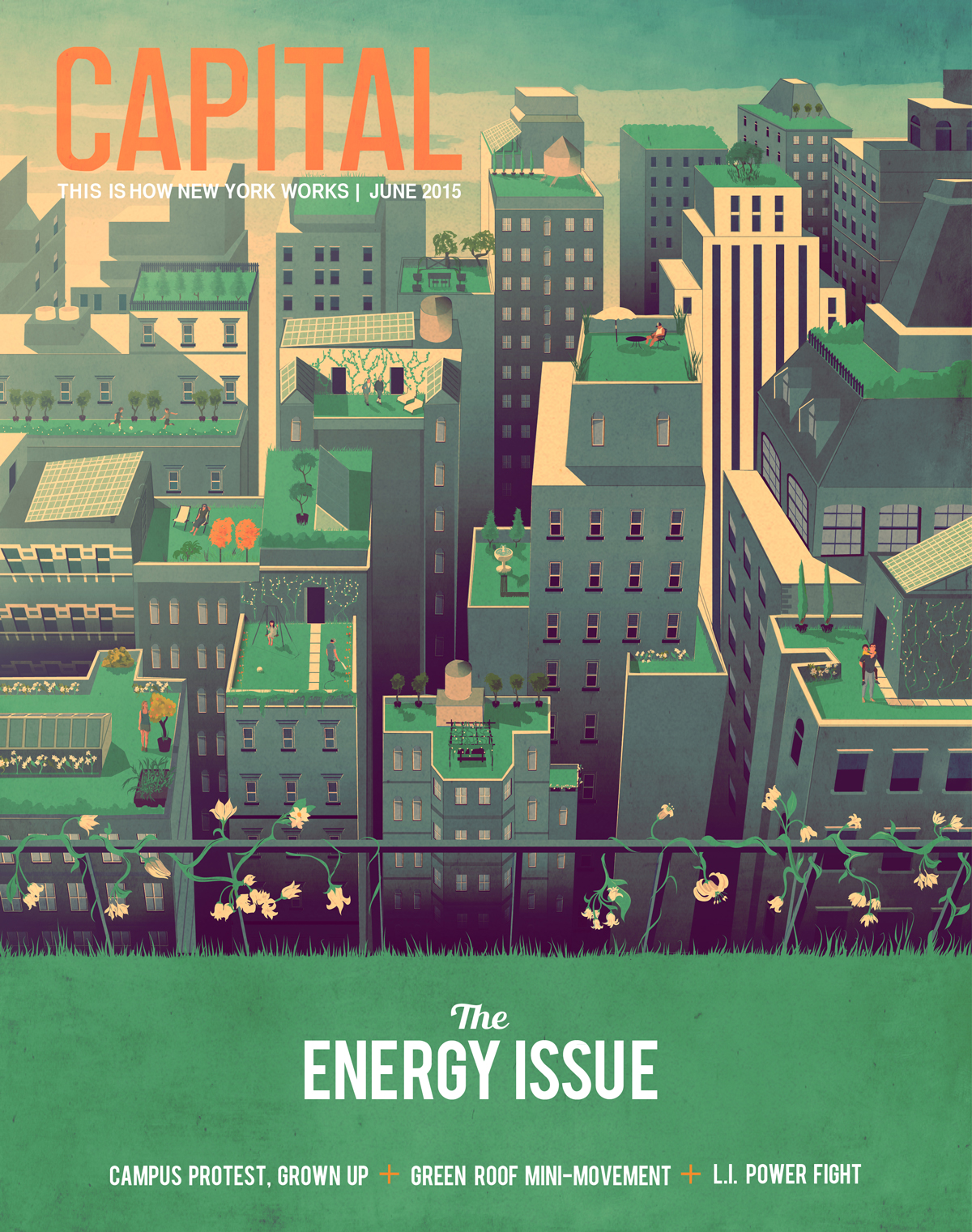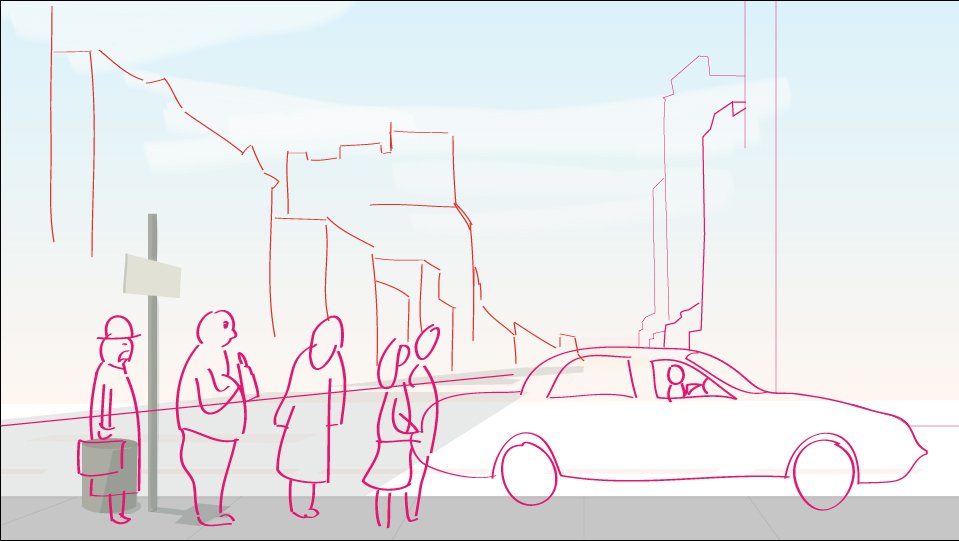Exploring the City: Illustrator Giordano Poloni shares his pro tips for creating stunning urban landscapes

Italian-born illustrator and motion graphic designer Giordano Poloni lives and works in Milan.
Specialising in editorial illustration, his work often depicts sprawling cityscapes and people exploring urban settings and atmospheric environments. He shares a few pro tips on drawing with perspective, colour palettes and playing with lighting effects.

Editorial illustration for Variety Magazine
Can you describe the essential qualities that make for a successful piece of urban illustration?
An urban landscape, like a sunset on the beach or a view from a mountain, could be a spectacular view to see. If you want to describe it at its best to a person that wasn’t with you, you can’t use whatever word you want, you have to choose the right ones that can convey the emotions that it raises on you, but you also have to take care of the entire speech that words are composing that give sense to all these words.
Now we can translate this example from writing/speech to drawing and say that every word should be a single building and the entire speech should be the totality of these buildings in the specific perspective you choose to represent that landscape. Choose the right shape and colour for every building and put all those buildings in the right perspective and you’ll have successful urban illustration. But don’t forget the importance of the light!
Choose the right shape and colour for every building and put all those buildings in the right perspective; don’t forget the importance of the light!
What are the advantages of using an illustration over photography? What role does illustration ultimately fulfil?
I suppose illustration can push the limits better then photography, using an imaginative universal language that breaks the rules of representation; where photography can reach universally understood situation, illustration, easily fitting different styles, has the possibility to describe and convey the unreal, the dream, the conceptual and the abstract, you don’t have to be at all related to reality. A complex idea can be solved easily in one illustration, no limits at what you can do or represent.
We can forget the importance of the economic aspect, a commissioned photography needs a great amounts of elements to be done ( studio, set, lights, props, models), while an illustration can be create with few things, a computer with a tablet or a blank sheet and some pens and colors.
Ultimately, with photography that has saturated the market, illustration is a valid alternative as a new product the majority of the costumers are not used to.
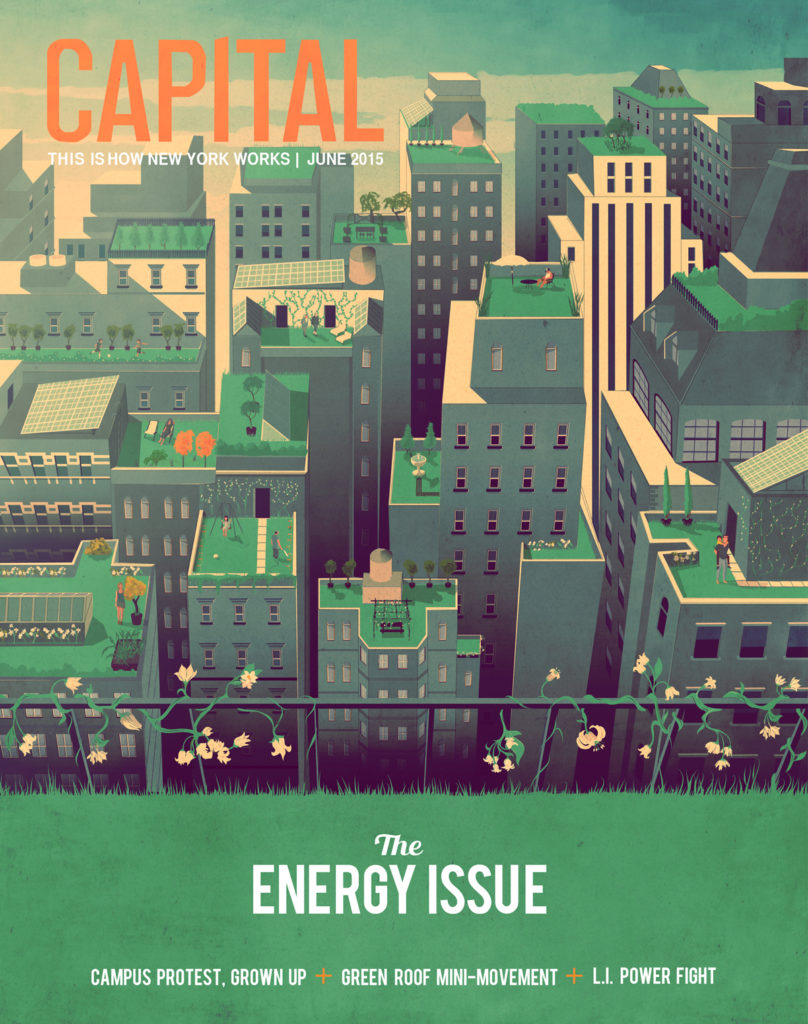
Cover illustration for Capital Magazine
Illustration can push limits with an imaginative universal language that breaks the rules of true representation.
Can you share your creative process, with reference to a recent commission?
We start with a brief, e.g.: The cover story is on New York City’s “green roofs,“which could mean alternative energy like solar or wind, but can also mean literally grass-covered roofs, which are environmentally beneficial. We’d like to focus on the second category and I’m imagining a view from above of the city with everything below the roofline having a grey/monotone cast, while the roofs are green, lush and have people enjoying themselves.”
I start by looking at some random photos on the internet to get inspiration on perspective and then I produce a couple of sketches. The first one is a quite simple semi frontal perspective, for the second one I chose a dizzying and spectacular view from a terrace with a parapet that gave a huge sense of identification. The client choose the second sketch (below), also my favourite one.
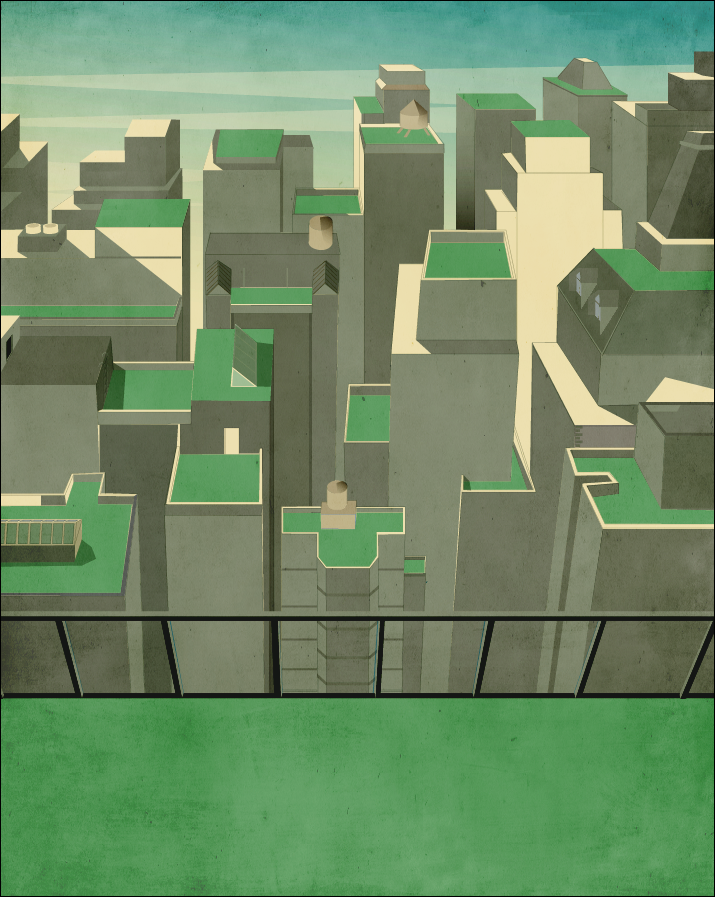
Cover illustration for Capital Magazine – work in progress
From this point the next step is to begin filling buildings with colours to choose the right mood, and I found that grey and green would have conveyed the right message about the contrast between a grey city (that represents a polluted city) and the green rooftop (that represent the ecologic and alternative energy).
Once I get to the flat image stage, I then add shadows to give more depth to the perspective and a better mood. The final step is to add light and make a colour correction to get a brighter and heartwarming illustration.

Cover illustration for Capital Magazine – work in progress
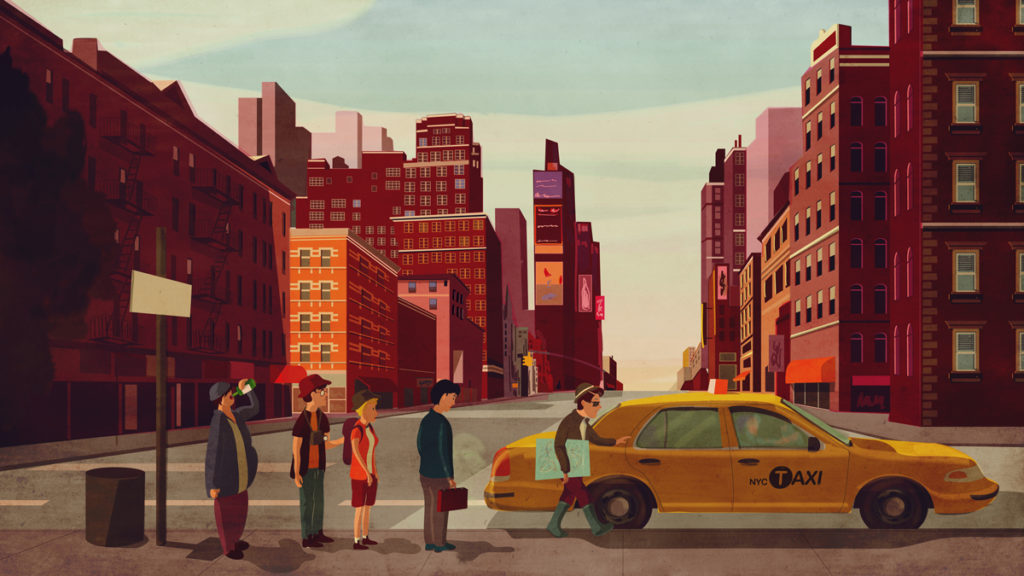
New York taxi driver illustration
What are the main technical and design challenges involved with creating city themed illustration for a client? Where do you find your inspiration for these images?
Clients usually need subjects inserted in a urban setting. Most of the time buildings need to be the main ‘characters’, so I constantly have to balance people and buildings. Create ones with a “strong personality” to make the landscape interesting. Sometimes they need to emerge and sometimes they just have to fill the role of background.
I found that my best inspiration comes from the covers of superhero comics, those perspectives are terrific!
I found that most inspiration comes from the covers of superhero comics, the perspectives are terrific! They obviously have more freedom on these as their primary target is to create spectacular subject matter.

Illustration for Hitachi
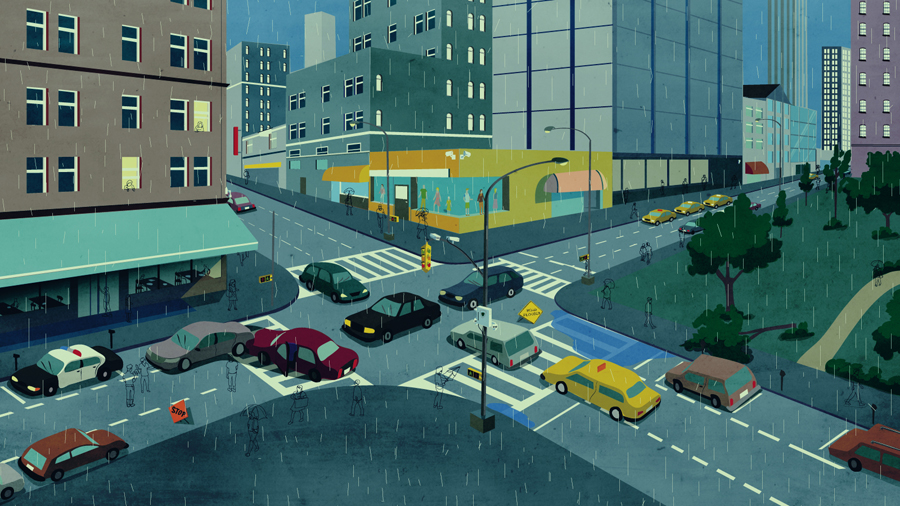
Illustration for Hitachi
Can you share a workable tip for illustrators who are interested in learning how to draw buildings, and cityscapes. What do illustrators need to be mindful of when drawing specific landmarks / cities for example?
First of all, study how to draw perspective. It’s quite difficult but once you get it you have the mental agility to imagine new kinds of perspective. It’s very important not to create the same stuff over and over, and become boring. After this study every detail of a city landscape: roads, buildings, windows, parks, cars. Don’t forget skies and clouds they are very important. Combine all these things to create something new in your artworks.
Secondly, search wherever you want to get inspiration. I usually use Google images, Pinterest, Flickr, but also architecture books and comics. The most important way to inspire yourself is to wander through every big city you visit. Look around you and shoot pictures or draw a quick sketch.



